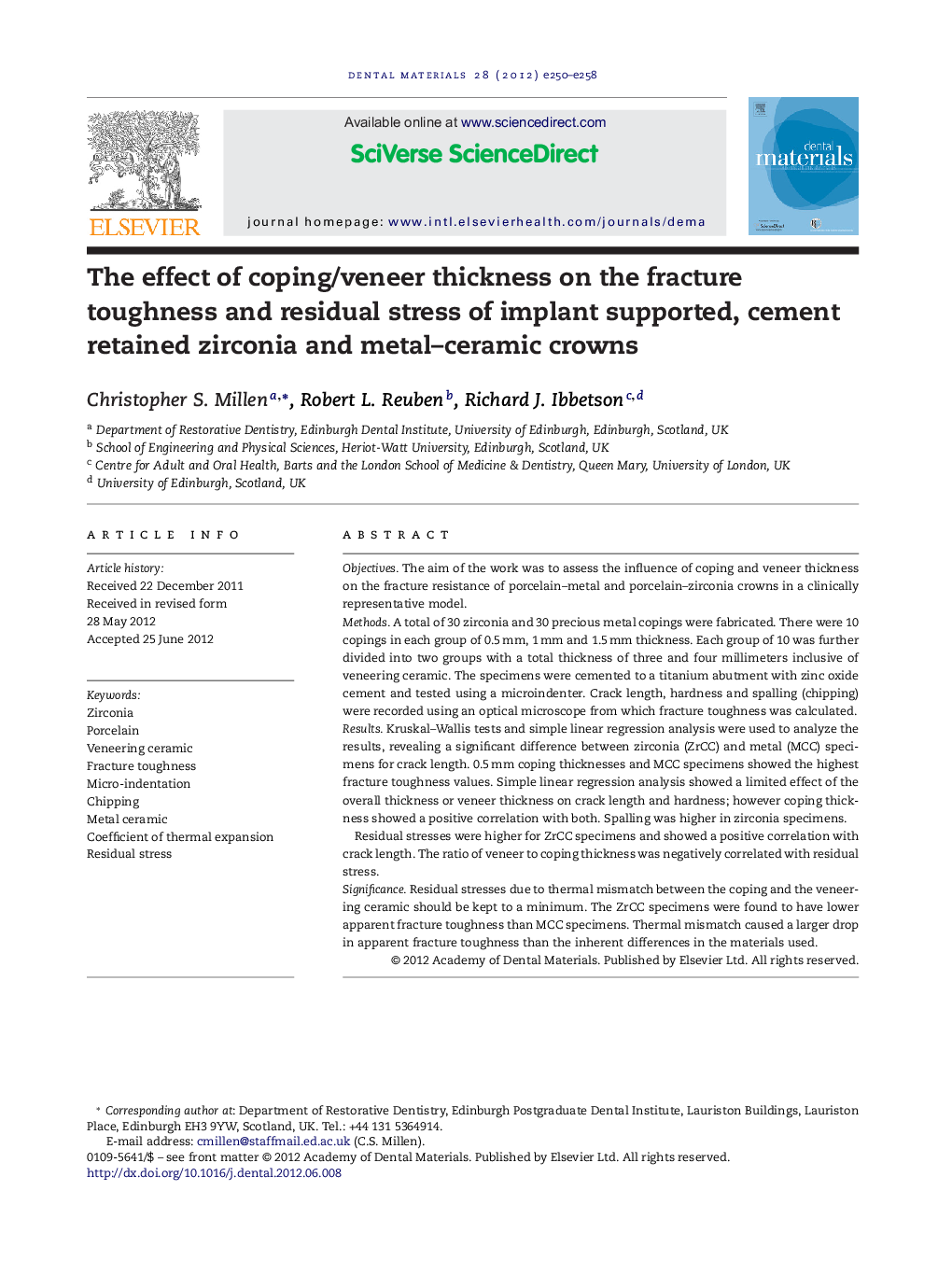| کد مقاله | کد نشریه | سال انتشار | مقاله انگلیسی | نسخه تمام متن |
|---|---|---|---|---|
| 1421932 | 986430 | 2012 | 9 صفحه PDF | دانلود رایگان |

ObjectivesThe aim of the work was to assess the influence of coping and veneer thickness on the fracture resistance of porcelain–metal and porcelain–zirconia crowns in a clinically representative model.MethodsA total of 30 zirconia and 30 precious metal copings were fabricated. There were 10 copings in each group of 0.5 mm, 1 mm and 1.5 mm thickness. Each group of 10 was further divided into two groups with a total thickness of three and four millimeters inclusive of veneering ceramic. The specimens were cemented to a titanium abutment with zinc oxide cement and tested using a microindenter. Crack length, hardness and spalling (chipping) were recorded using an optical microscope from which fracture toughness was calculated.ResultsKruskal–Wallis tests and simple linear regression analysis were used to analyze the results, revealing a significant difference between zirconia (ZrCC) and metal (MCC) specimens for crack length. 0.5 mm coping thicknesses and MCC specimens showed the highest fracture toughness values. Simple linear regression analysis showed a limited effect of the overall thickness or veneer thickness on crack length and hardness; however coping thickness showed a positive correlation with both. Spalling was higher in zirconia specimens.Residual stresses were higher for ZrCC specimens and showed a positive correlation with crack length. The ratio of veneer to coping thickness was negatively correlated with residual stress.SignificanceResidual stresses due to thermal mismatch between the coping and the veneering ceramic should be kept to a minimum. The ZrCC specimens were found to have lower apparent fracture toughness than MCC specimens. Thermal mismatch caused a larger drop in apparent fracture toughness than the inherent differences in the materials used.
Journal: Dental Materials - Volume 28, Issue 10, October 2012, Pages e250–e258